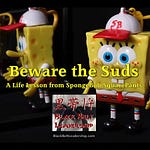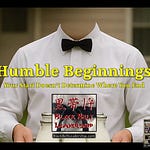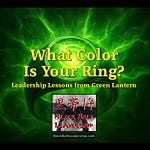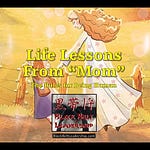One of my favorite TV series to watch as a child was Batman. Yes, I am talking about the corny 1960s version with Adam West as the Caped Crusader and Burt Ward as the Boy Wonder. You know, “Same Bat Time, Same Bat Channel.”
Each week, Batman would find himself facing another arch-enemy, with the fate of Gotham in the balance. Every other week, it was a cliffhanger. Batman and Robin found themselves trapped by the likes of Penguin, Riddler, Mr. Freeze, or Cat Woman. The final scene left you hanging, wondering what was going to happen next.
The following week, Batman managed to retrieve a Bat-Something from his utility belt, exactly what was needed to free himself and Robin from the clutches of the enemy. The storyline repeated itself episode after episode for the entire season of the series.
David Carradine starred as Kwai Chang Caine in the TV series, Kung Fu. Originally an idea of Bruce Lee, it’s the story of a half-American, half-Chinese orphan who was granted access to the Shaolin Temple where he became a Master in the Art of Kung Fu. Having killed the Emperor’s nephew in self-defense, he fled to America in search of a half-brother who was rumored to be living in the American West.
Each episode found the peace-loving Monk in a situation where he was forced to defend himself, or someone else. As conflict ensued, the viewer gained a glimpse into Caine’s life in the Shaolin Temple, a deeper understanding of the Art of Kung Fu, and the life lessons he learned along the way. These flashbacks helped provide context to Caine’s approach to life or illustrate the power of Kung Fu as a defensive Art.
That’s what scenes do. They give a story power and context.
I started writing plays when I was in elementary school. My fifth-grade teacher encouraged my fledgling talent. She asked me to assemble a cast, rehearse, and perform the play for the student body. The storylines were based on popular TV shows of the day: Westerns, Science Fiction, or Police/Detective. My inspirations included shows like The Wild, Wild West, Gunsmoke, Star Trek, Dragnet, and Adam 12.
They were simple, three-act plays, but the experience set me on a path that has helped to make me the prolific writer I am today. I learned a lot, early on, about stories and scenes.
First, was the creation of the story. This was the actual drama that would be portrayed on the stage (or the screen). It was comprised of a series of events, known as scenes, that would take the viewer on a journey that would entertain, educate, or inform.
The story was the overarching message you wanted to convey to the audience and what they would experience along the way.
A story is comprised of a series of scenes, the individual elements of a story. Each scene is used to introduce characters, set up the conflict to come, reveal a plot or a subplot, or add context or an explanation. Scenes reveal an individual moment of dialogue or action.
An Act is a collection of scenes strung together to provide perspective to the viewer. A series of Acts (typically three or four) constitutes a story. That story can be a novel, a play, a TV show, or a movie.
A series is a collection of short stories woven together into a cohesive narrative. The TV shows I named earlier, and countless others, embraced this format of storytelling on the small screen. The format remains basically unchanged decades later.
Scenes and stories.
But what happens when we get “stuck” in a scene, and that now defines us?
At the end of Episode V of the Star Wars saga, Luke Skywalker left before finishing his Jedi training with Yoda to face Darth Vader. In their epic lightsaber battle on the Cloud City of Bespin, Luke’s right hand is severed by Darth Vader. It is in that painful moment that Luke learns the chilling truth that the evil Sith Lord he is battling is his father, Anakin Skywalker.
What if Luke had chosen to allow the loss of a limb to define the rest of his life?
What if he chose to accept his father’s request to rule the Empire at his side?
What if Luke, in that moment, had simply chosen to give up and die?
The story would have ended quite differently.
That scene was one moment in time, it contributed to the story, but it wasn’t the entire story.
In the movie, Infinity War, the Avengers are battling Thanos to prevent him from collecting all six infinity stones, allowing him to use the power of the combined stones to control reality. As the movie moves to its climax, Thanos collects the last of the infinity stones, snaps his fingers, and half of the universe’s populace dissolves into nothingness.
What if the Avengers had simply given up, accepting what had happened, and done nothing to right the wrong?
The story would have ended quite differently.
That scene was one moment in time, it contributed to the story, but it wasn’t the entire story.
Whether it’s Batman in Joker’s clutches, James West snared in another of Migileto’s traps, or Captain Kirk and the crew of the Enterprise being outmaneuvered and outgunned by an alien species, these stories would have ended quite differently (and perhaps ended the TV series) if they had simply accepted their fate.
Yet they chose NOT to be defined by a single scene in the story, but to define their lives by how they responded.
They chose to write their own ending…and so should we.
Life is a story. Each day is an episode, a series of scenes woven together to create a cohesive narrative of who we are and who we are becoming.
Like Matt Dillon, Bruce Wayne, James Kirk, or Diana Carter, we are a central character in our own story. After all, it’s our story. We’re supposed to be the star.
But who’s writing the script? Who’s directing the action?
Life is a series of opportunities disguised as problems, challenges, and obstacles. Success is defined by our ability to solve problems, overcome challenges, and remove the obstacles in our lives.
Successful people not only star in their own Story, they don’t allow others to write the script. They recognize that success is determined by how they respond to whatever life brings their way.
Conflict is inevitable in life. How we respond to conflict determines whether or not we are writing our own script and directing our own story.
Scenes give a story power and context.
Remember, scenes are a moment in time. They contribute to the story, but they are not the whole story…unless we write the script that way.
In the movies, Luke went on to finish his training, face his father, and ultimately defeat the evil Emperor. The Avengers traveled back through time to collect the infinity stones and use them to bring back the lives Thanos snapped into oblivion.
They chose NOT to allow a scene to define their future. They wrote and then acted out their own successful version of the future.
There’s a powerful leadership lesson here.
If you don’t like the scene you find yourself in, don’t let it define you.
Choose instead to write the next scene and act it out.
Every time we face a problem, challenge, or obstacle, it’s only a single scene in the story of our lives. Every time we make a mistake, stumble, or fail, it’s only a single scene in the story of our lives.
Unless we choose to stay there, in that scene, reliving it over and over again for the rest of our lives.
Black Belt Leaders are intentional about directing their lives. If they don’t like the scene they find themselves in, as the director, they understand that they have to power to say “Cut” and bring the scene to an end. They also understand they can turn the page on the script, set up the next scene, and say, “Lights, camera, action” and start again.
They don’t allow one scene to make or break their story, especially if it is a scene they didn’t write into the script.
Here’s the takeaway I want to leave you with as I wrap up this week’s lesson:
A scene is a moment in time. It contributes to the story, but it isn’t the whole story.
If you don’t like the scene you’re in, be the Director and Cut It!
If you want to start a new scene, turn the page on the script (or write a new script), set up the next scene, and start the cameras rolling.
Lights, Camera, Action.









